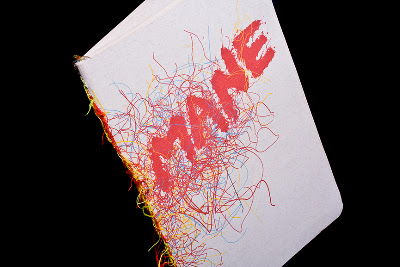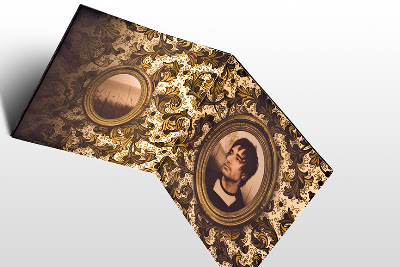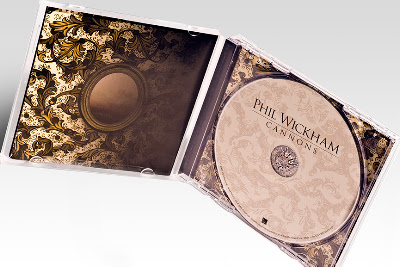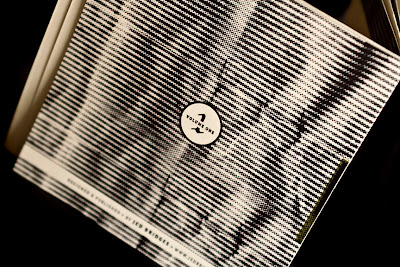We recently met up with Dave from Factory Records in Costa Mesa, and asked him to trace the origins of his lifelong obsession with vinyl. We were so blown away by his amazing story that we decided to feature it in its entirety...
I started collecting vinyl as a pre-teen (I guess it's called a "tween" now). I got my first records from my mom when I was ten or so—some Beatles albums. And while my dad wouldn't give me his albums, I loved listening to his Johnny Cash records (especially the "Everybody Loves a Nut" album), and was exposed to Ray Charles long before it was cool to like him because of a movie. Other artists my parents introduced me to were Neil Diamond, Lou Rawls, and Barry Manilow. Of course, my younger brothers and I had a bunch of dumb kids’ records, too, but I loved flipping through the grown-up stuff and looking at the covers while listening to the music on the stereo.
The seed was planted.
Anyways, I had a paper route when I was ten years old until I was about 15 ½ (that means I was a paperboy, which is kinda a lost art these days). I'd deliver Daily Pilot newspapers in my Costa Mesa neighborhood weekday afternoons after school, and weekends around sunrise. I'd finish the deliveries on weekends just as the neighborhood garage sales were opening for business, so I had first crack at the crates of records. This was before the internet and TV shows like American Pickers and Pawn Stars, when you could relax and find cool albums all across the neighborhood almost every Saturday morning. (Nowadays, garage sales are ruined by coked-up, crate-digging hipsters who think they're gonna get rich on Ebay with all of their tattered Pickwick label Elvis records.) Thus I was able to build a nice collection of what's now considered classic rock: Beatles, The Stones, The Who—stuff like that. (And I loved the solo Beatles stuff—a Wings record was just as big of a score as, say, Revolver. My first Beatles Butcher Cover came from a garage sale right across the street from my house. It was either a quarter or fifty cents. What's crazy is that I've had three of these come into the shop in the past two years or so, sold by sellers who didn't have a clue. Butcher Covers are still out there! I can only imagine, being so naive and focused on mostly one type of music at an early age, what gems I let slip through my hands! Oh well!)
In my early teens, while still a paperboy, I was turned on to the local independent record stores in Costa Mesa. One of these was called Music Market, located just three blocks outside of my neighborhood. It wasn't the size of a modern superstore like Amoeba Records, but for its size in the 80’s, it was fucking huge—and it had everything, in every genre imaginable. I'd take my paper route earnings and buy a bunch of used records. They had a fifty cent bin that was amazing (The first fifty cent record I ever bought from Music Market was The Specials eponymous debut LP), and tons of great used LPs for 99 cents, $1.99...I remember thinking $2.99 or $3.99 was kinda pricey for a used album, so it must be something really rad. On occasion I'd pick out a new album for $5.98, $6.44, or $6.98. Imports could cost anywhere from $8.98 to $10.98, so it’d have to be something REALLY special, like a Beatles soundtrack album (without the shitty instrumental tracks). There were other stores to frequent: Discount Records and Licorice Pizza were cool. And in the early 80’s, Orange Coast College started a swap meet that was great for used album digging (the big swap meet at the OC Fairgrounds pretty much sucked for record shopping).
In 1988, shortly after high school graduation (Class of '87, Costa Mesa High!), while unenthusiastic about my higher education at OCC, I scored a job at Music Market. This proved to be the most important learning experience of my life. I worked my way into being in charge of all the used merchandise. I was the import buyer, and was able to observe the inner workings of an independent record store. I briefly left Music Market to work across the street at Discount Records, which taught me all about the basic bookkeeping and maintenance of a mom and pop shop. Shortly after returning to Music Market, they got bought out by a chain, and I realized there was no future for me sticking around there. One day my mom spotted a vacant shop on the corner of Mesa Verde Drive and Harbor Blvd., behind a 7-11. She gave me the number, I checked the place out, and the rest is history.
I opened Noise Noise Noise Records on April 2, 1991. I didn't have a ton of money, but with lots of love and labor from family and a few friends, it was done. Noise Noise Noise was a total DIY shop, nothing fancy: white-washed walls with some posters, a counter from the Goodwill, record and CD racks cobbled together, stocked with records from my own collection, along with a few lots bought at the OCC swap meet. Business did well right from the start. A few months after opening a guy came in with a box of records. He told me it was "rave" music, that DJs liked these records. (I was already hip to the rave scene, which was quickly gaining momentum in Los Angeles. I'd been attending these warehouse parties for a year or so: crazy, underground clubs thrown—illegally—in warehouses. The promoter would break in, set up a crazy sound system and weird visuals, sell everyone LSD or ecstasy, and the DJs would play far out music until the next morning—unless the cops shut the party down. Whenever that happened, we, the attendees, would have to run like hell, out of our minds on psychedelics, to another party, or somewhere safe. It wasn’t anything like these boring, corporate Electric Daisy parties kids do these days. We paved the way for them, and it was a wild ride.) So, I bought two of each record this guy had. They sold out within days, and when he returned the next week with more old and new titles, I bought three or four of each. Suddenly Noise Noise Noise was the place to go for this far out rave music—the DJ culture exploded. We started selling tons of techno, house, and all the micro-genres of this dance culture, along with hip hop, reggae, dancehall, and so on. Suddenly, everyone was a DJ or a producer and wanted all the original jazz, funk, and soul records that artists were sampling, so we started pushing those genres, too. As all this was happening, bands like Green Day and the Offspring had ignited the pop punk explosion, while Sublime and No Doubt were rocketing the third wave of ska. (The Offspring, Sublime, and No Doubt, being from Orange County, put the area on the map, which only fueled the local music scene.) Before the internet, your local record store was ground zero for hearing new sounds, gossip about your favorite band, or grabbing flyers for upcoming shows. You'd come to a shop like Noise Noise Noise to pick up fanzines, t-shirts, posters, tickets for shows, and so on. It was insane. We also became friends with a lot of the DJs at the University of California, Irvine's KUCI radio station, and, as customers, they opened my eyes to all sorts of underground music genres I'd never been super deep into: ambient, prog rock, space rock, IDM, noise, experimental, and much, much more. Noise3 had an amazing mutual relationship with the KUCI crew, and I credit them for many of the music styles we sold at Noise3. I'll hear them say it was because of Noise Noise Noise that they did this or heard that, and I'm like, "No! No! You've got it backwards!"
There were lots of stores in Southern California at this time, but none sold the variety of sounds that we did (save for a few shops in LA). We were so diverse in our selection—and I say "we" because there were a handful of us there responsible for what we stocked. I signed the check when the UPS guy brought the orders, but I wasn’t the only selector. Noise3 just killed it in the 90’s. I was able to buy a house in a middle-upper class Costa Mesa neighborhood (total Descendents "Suburban Home" style!), was responsible for others getting paychecks so they could survive, paid my taxes and bills, had that financial security so many others wished they had—hell, I even had a pretty fat retirement fund going...and then I fucked it all up.
Throughout the early 2000s, I was hopelessly hooked on drugs, and, subsequently, the store started slipping. By 2003, it was obvious to everyone that I was fucked. Folks abandoned me and the shop en masse (only a couple guys stayed on). Customers, meanwhile, were shopping elsewhere. In denial, I blamed Napster. (MP3s and downloading, of course, were killing the independent record store, but not as quickly as I was on my own.) Come 2006 I was broke, in and out of jail, and after skipping out on 5 months’ rent at Noise3, out of a shop and a job.
Eventually, though, I got my shit together—working odd jobs, touring the US with my brother's band Six, and holding a huge record-only garage sale each year on Record Store Day (unloading tons of killer records previously stuffed in storage for a buck each—unwittingly keeping myself in the game). Somehow I wound up working at Second Spin in 2009, which was my first time working at a corporate record (ok, CD/DVD) store. Ten months in, a guy I knew stopped in and asked if I'd be interested in opening up a shop again—a store called Sound Trolley was vacating a small space behind his girlfriend’s barbershop on East 17th Street in Costa Mesa. I knew of the location, and told him “no,” thinking it was too small. He told me to take a look anyways, so I did—the rest is history. I signed the lease on April 1, 2010—almost 19 years to the day after I opened Noise Noise Noise—and I opened Factory Records on April 24, 2010. It's named after the record label of one of my all-time favorite bands, New Order. I opened the shop with some reluctance, wondering if I still had my any game left in the record world, and doubtful that a store could thrive in this day and age.
But I did, and it has.
The shop has been very successful since I opened it. (January 2013 marks 25 years of slingin’ wax for me!) That said, I’m able to do this because I live with my parents at 43 years of age (that house I owned was gradually shot into my veins every time I did my heroin). But at least now I know that, if necessary, I could survive on my own.
Read complete interview here.
Introduction & Interview By Jesse Dunstan



















































